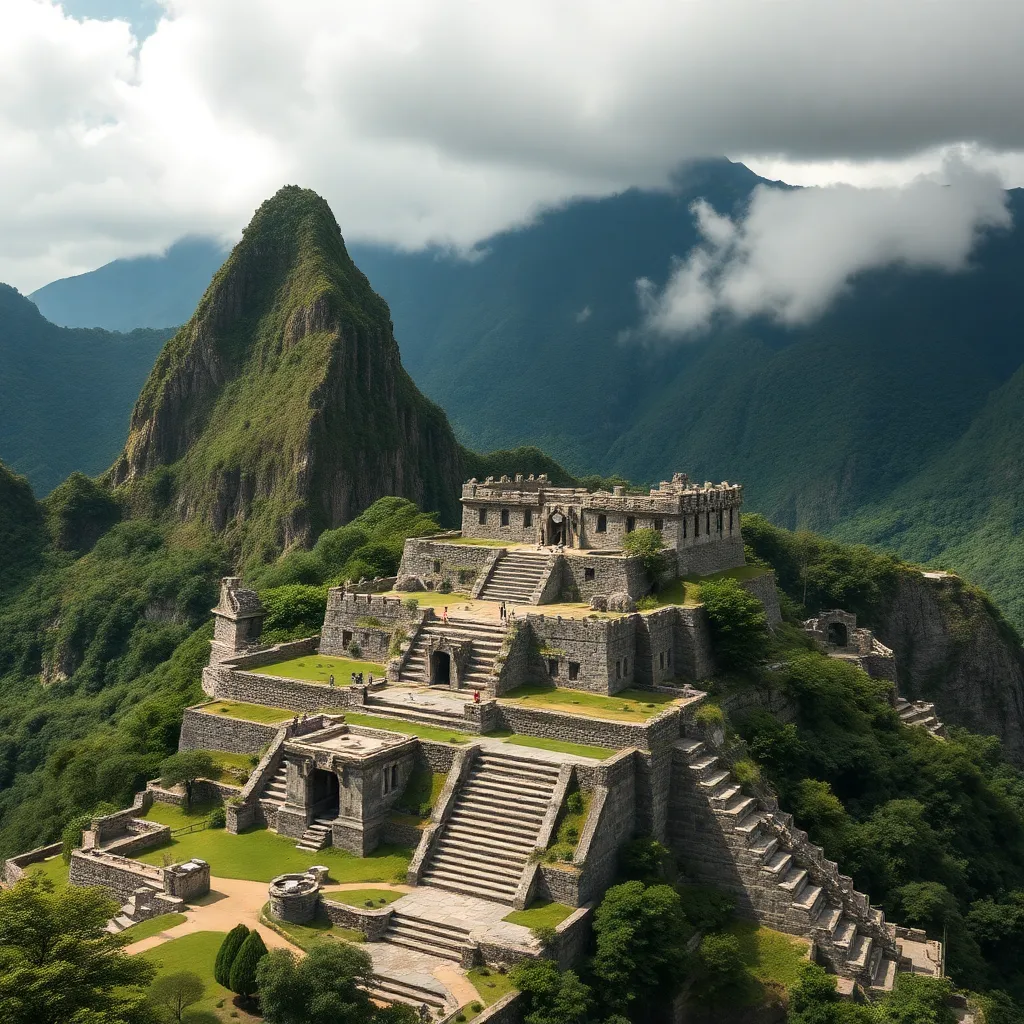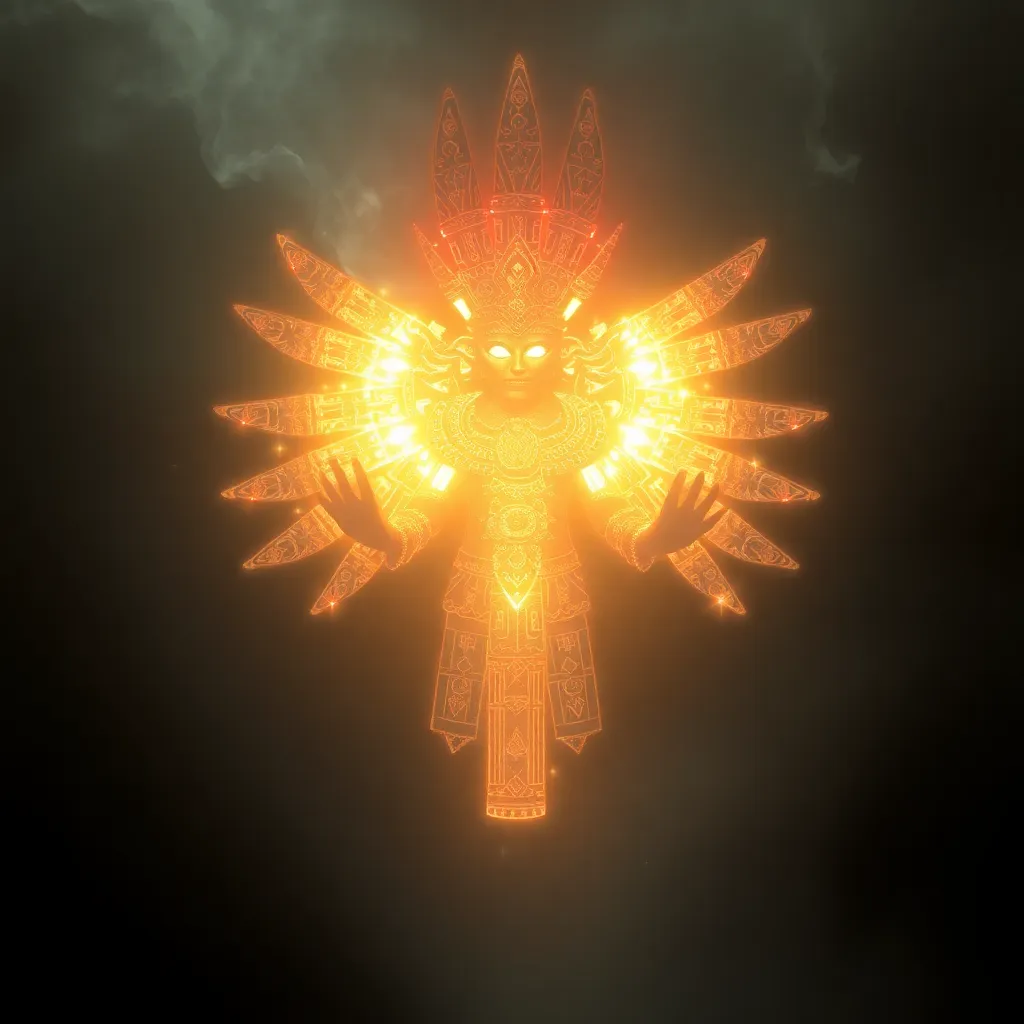Cipactli’s Teeth and the Origins of Mountains: Exploring the Geographical Legends of Aztec Cosmology
I. Introduction
Aztec cosmology is a rich tapestry of beliefs and narratives that provide insight into how the ancient Mexica people understood their world. Central to these beliefs is the figure of Cipactli, a primordial Earth monster whose significance in creation myths cannot be overstated. This article delves into the connection between Cipactli’s teeth and the formation of mountains, exploring how these elements intertwine within the broader context of Aztec mythology and geography.
II. Cipactli: The Earth Monster
Cipactli is often depicted as a gigantic crocodile-like creature, embodying the chaos of the primordial world before creation. In Aztec mythology, Cipactli represents not only the Earth but also the raw forces of nature that shape the landscape. As a central figure in the creation narrative, Cipactli’s character serves as a symbol of the duality of creation and destruction.
The symbolic role of Cipactli extends beyond mere representation; it reflects the Aztec understanding of the natural world as a place of balance and conflict. The monster’s struggle against the gods illustrates the concept of sacrifice and the necessity of overcoming chaos to create order.
III. The Creation of the Earth: A Mythological Perspective
The creation myths of the Aztecs tell a compelling story of struggle and transformation. In one prominent narrative, the gods Tezcatlipoca and Quetzalcoatl engage in a fierce battle against Cipactli, the Earth monster. This epic conflict ultimately leads to the dismemberment of Cipactli, with the various parts of its body becoming the land, mountains, and rivers of the Earth.
Significantly, sacrifice plays a crucial role in these myths. The gods’ willingness to sacrifice parts of themselves or engage in battles against Cipactli underscores the idea that creation is born from struggle and loss. This theme resonates deeply within Aztec cosmological beliefs, emphasizing the interconnectedness of life, death, and rebirth.
IV. Mountains in Aztec Cosmology
Mountains hold a sacred place in Aztec cosmology, viewed not only as physical landmarks but as spiritual entities that connect the heavens and the Earth. They are often seen as dwelling places for gods and ancestors, embodying the dual nature of the sacred and the terrestrial.
- Symbolism of Mountains: In the Aztec worldview, mountains symbolize strength, permanence, and the sacredness of nature.
- Myths Associated with Mountains: Specific mountains, such as the Popocatépetl and Iztaccíhuatl, are steeped in myth, representing love, sacrifice, and the cycle of life and death.
V. Cipactli’s Teeth: A Metaphor for Landscape Formation
The teeth of Cipactli serve as a powerful metaphor for the creation of landscapes. Each tooth can be interpreted as a mountain or hill, representing the physical manifestation of the chaotic forces that shaped the Earth. This interpretation invites a deeper understanding of how mythology and geography can be intertwined.
The relationship between myth and physical geography is evident in various case studies. For instance, certain mountain ranges in central Mexico are believed to be directly linked to the legend of Cipactli, illustrating how ancient narratives have shaped contemporary understandings of the landscape.
VI. The Intersection of Myth and Geography
Aztec cosmology reflects the natural landscape in profound ways. The oral traditions that have been passed down through generations preserve not only stories but also geographical knowledge that is deeply rooted in the cultural identity of the people. This intersection of myth and geography serves as a lens through which we can view the environment.
Modern interpretations of these myths reveal a rich tapestry of meanings that resonate with contemporary environmental discussions. As we explore the relationships between ancient narratives and landscape formation, we gain insight into the ways cultures understand and interact with their environment.
VII. Legacy of Cipactli in Contemporary Culture
Cipactli continues to influence modern Mexican identity and culture, serving as a symbol of resilience and connection to the Earth. The figure of Cipactli and the myths surrounding it are relevant in contemporary discussions about environmental stewardship and the importance of preserving cultural heritage.
- Artistic Representations: Cipactli has inspired various forms of artistic expression, from traditional crafts to modern visual art, reflecting the ongoing relevance of these myths in shaping cultural landscapes.
- Environmental Discussions: The themes of sacrifice and balance found in Cipactli’s story resonate with current environmental challenges, emphasizing the need for a harmonious relationship with nature.
VIII. Conclusion
The significance of Cipactli in Aztec cosmology extends beyond mythology, offering profound insights into the relationship between humanity and the natural world. The enduring impact of these legends enriches our understanding of geography and the myths that shape our perceptions of the landscape.
As we continue to explore the connections between mythology and the physical world in various cultures, we uncover the universal themes that bind humanity to the Earth, reminding us of the power of stories in shaping our understanding of existence.



